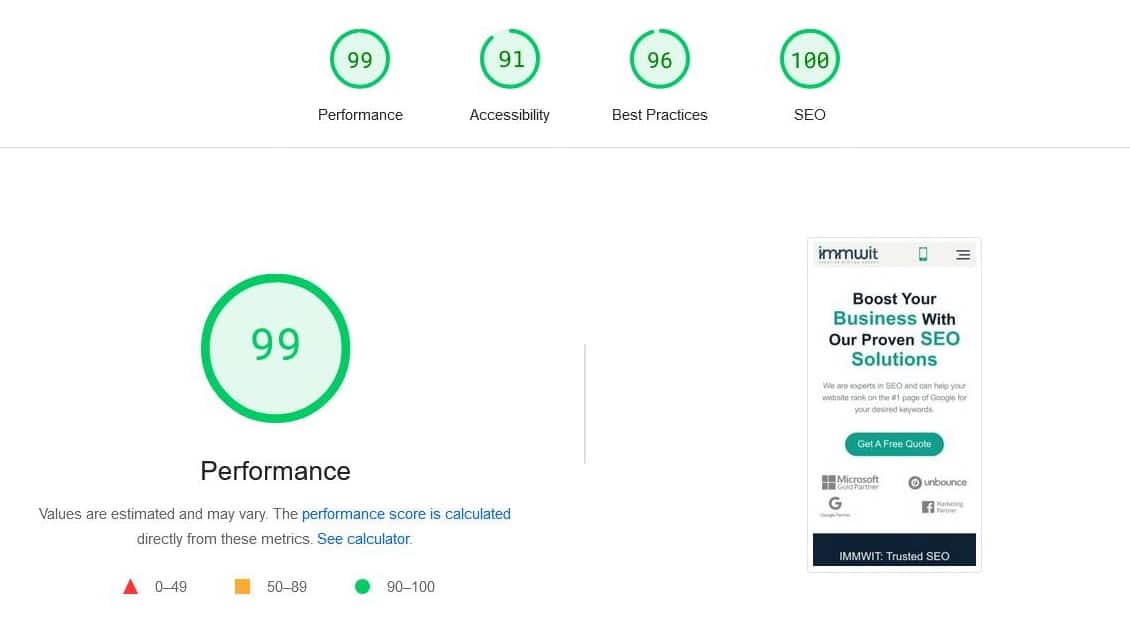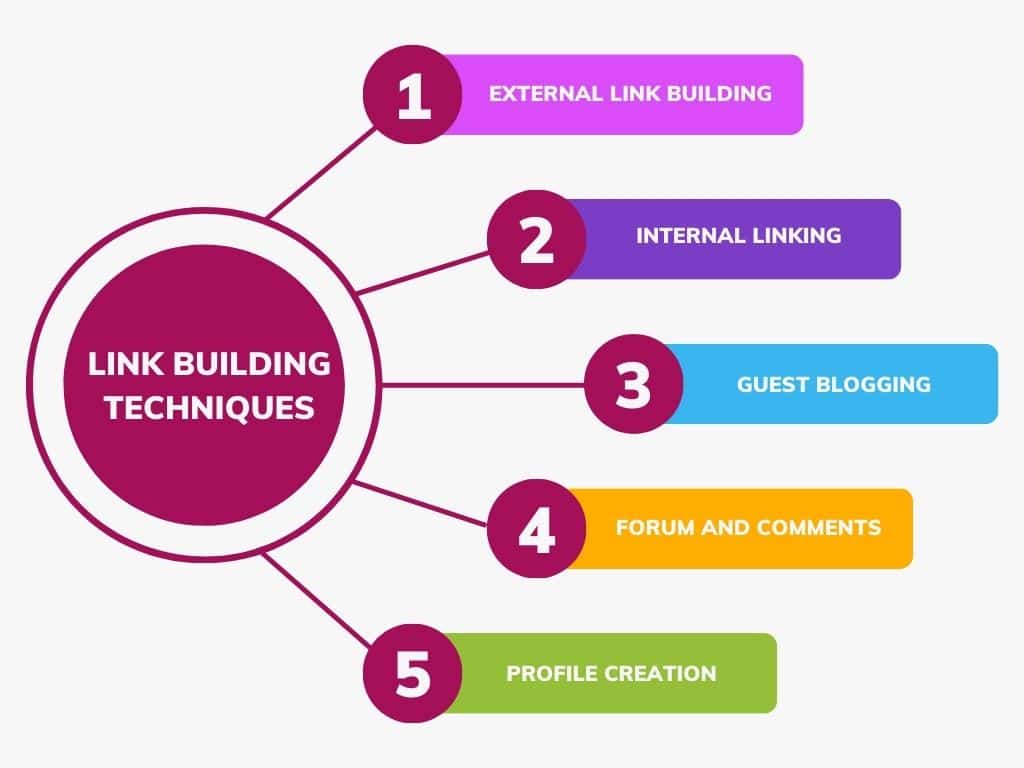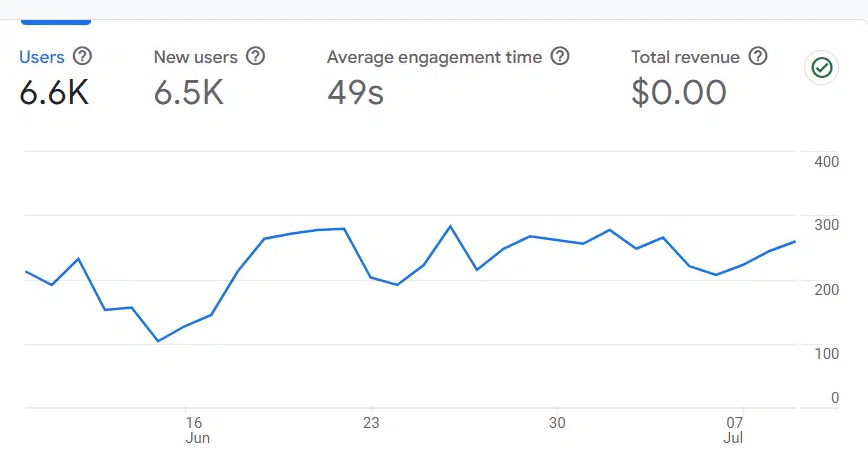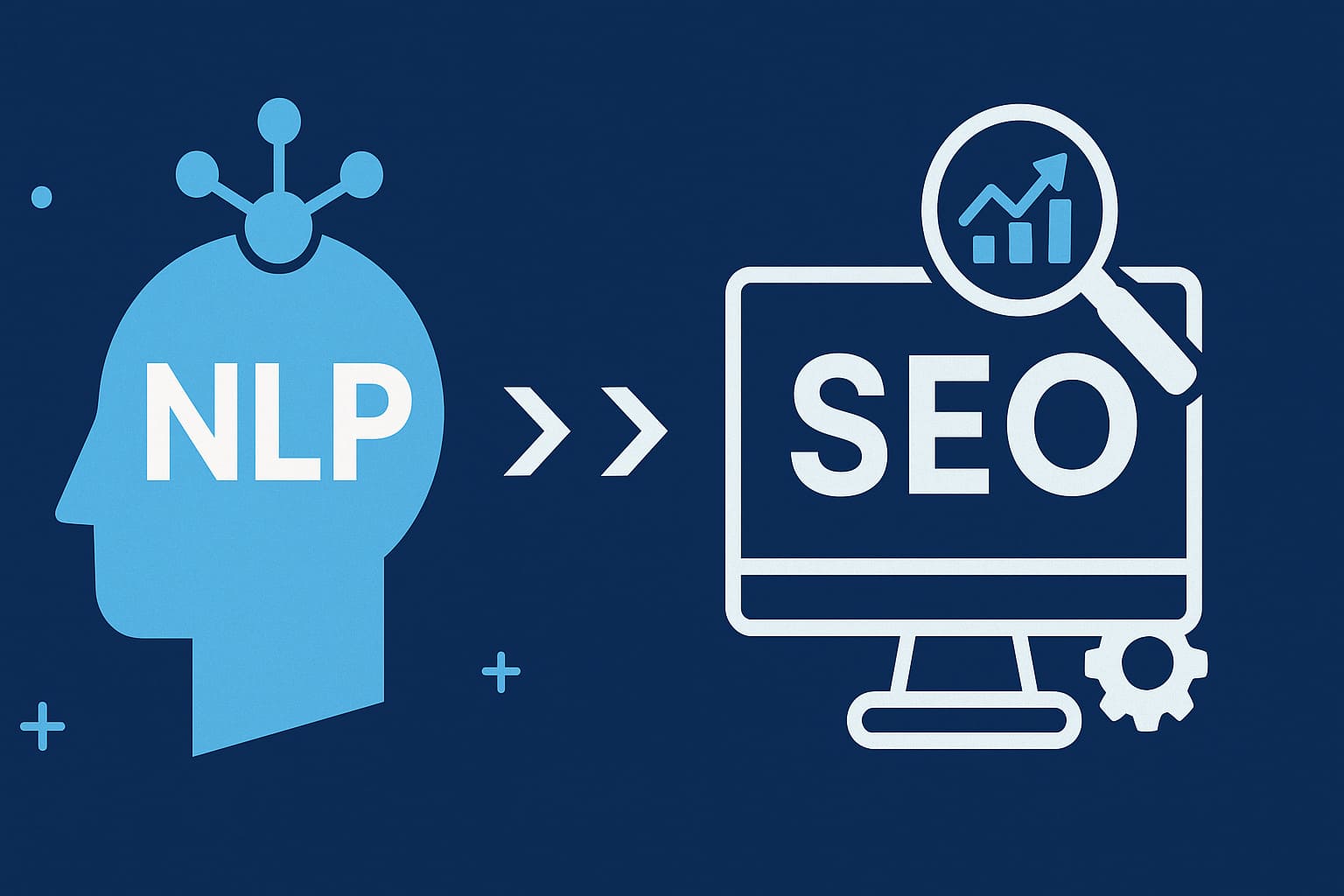Staying updated with SEO trends is crucial for small businesses in 2024. It helps with online presence and more customers.
In 2024, several major changes in SEO could impact small business websites. These changes include a focus on mobile-first indexing, Core Web Vitals, and voice search optimization.
These will help small businesses rank higher in search engines so customers can find them easier.
Here are the SEO strategies to optimize small business websites using these trends. And new tools and techniques to help small businesses succeed online in 2024.
SEO Trends for Small Business in 2024
SEO is changing fast in 2024. Small businesses need to know what’s latest. Here are the latest SEO trends to follow to grow your business website and rank higher in search engines.

1. Optimize Your Website Structure
A well structured website is better for user experience and SEO. When your site is easy to navigate visitors will stay and explore. Search engines can crawl and index well structured sites faster and help you rank better.
Clean and Modern Web Page Layout
A clean and modern page layout is more engaging. Focus on design that uses white space well and makes content easy to read. Make your layout visually appealing to keep visitors interested.
Organizing Your Site in a Hierarchy
Your site should be organized in a clear hierarchy. Use categories and subcategories to group related content. This structure helps users understand the relationship between pages and navigate your site easily.
Adding Visual Sections and Google Maps
Adding visual sections breaks up text and keeps users engaged. Use images, infographics and videos to support your content. Visuals make information easier to consume and overall user experience better.
Having Google Maps on your website is beneficial. It’s for local SEO and users can find your physical location easily. A map can also show directions and nearby landmarks and make user life easier.

2. On-Page SEO
ON-Page SEO is about optimizing elements within your website. It helps search engines understand your content and user experience. In 2024 ON-Page SEO can help grow your small business website online.
On-Page SEO Techniques
- Title Tags: Each page should have a unique title tag with primary keywords. A strong title tag helps search engines and users understand what the page is about.
- Meta Descriptions: Write meta descriptions (around 150 characters) for each page. Include relevant keywords and a call-to-action to entice users to click from search results.
- Header Tags: Use header tags (H1 for titles, H2 for subtitles) to structure content. This makes content more readable and users can navigate the page easily.
- URL Structure: Keep URLs simple and relevant to the content. Include keywords in URLs for search engines to index better.
- Image Alt Text: Write descriptive alt text for images. This helps search engines index your images and make your content accessible to users with visual impairment.

3. Core Web Vitals
Core Web Vitals are a set of metrics that Google uses to measure user experience of a website. These metrics focus on three main areas: loading speed, interactivity and visual stability.
Key Metrics: LCP, FID, and CLS
- LCP (Largest Contentful Paint): How long does it take for the main content of the page to load.
- FID (First Input Delay): How long does it take for the page to become interactive.
- CLS (Cumulative Layout Shift): How stable is the page and how much does the layout shift during loading.
Why User Experience is Crucial for SEO
Good user experience keeps users on your website longer, reduces bounce rates and improves conversions. Google considers user experience when ranking websites so better UX can lead to better search rankings.
Ways to Improve Core Web Vitals Scores
- Optimize images by using right formats and compression.
- Minimize JavaScript and CSS blocking resources.
- Improve server response time by using faster hosting.
- Implement lazy loading for images and videos.
- Don’t let content move unexpectedly by reserving space for ads.
Tools to Measure and Optimize Core Web Vitals
- Google PageSpeed Insights: Gives detailed reports and suggestions to improve web performance.
- Lighthouse: An open-source tool to audit and improve web pages.
- Web Vitals Extension: A Chrome extension that gives real-time Core Web Vitals metrics.
- Search Console: Gives insights and reports on your site’s Web Vitals performance.
These will help small businesses to improve their website user experience and search engine rankings.

4. Mobile-First Indexing
Mobile-first indexing means Google uses the mobile version of your website for ranking and indexing. This change emphasizes the need to have a mobile website to be visible in search results.
Having a mobile optimized website is important. Most users now browse the internet on their phones. A mobile website gives a better experience, longer visits and more conversions. If your site is not mobile friendly, users will bounce.
Best Practices for Mobile Friendly Design
- Use responsive design to adjust layouts based on screen size.
- Simplify navigation for easier access to important information.
- Optimize images to reduce loading time.
- Make text readable without zooming.
- Avoid pop-ups that cover content on mobile screens.
How to Test Your Site for Mobile-First Indexing
You can test your site using Google’s Mobile Friendly Test tool. This tool checks if your website is mobile friendly. It gives suggestions based on the test results.
More and more people are using mobile phones every day. Businesses need to adapt to this shift by going mobile first. Ignoring mobile trends will mean losing customers and lower search rankings.

5. Voice Search Optimization
Voice search has a big SEO impact in 2024. More people are using smart devices like phones and speakers to search online. Businesses need to adapt to this to stay relevant and reach their target audience.
How Voice Search Changes Keyword Strategy
Voice search changes the way we think of keywords. Users speak in full sentences, not short phrases. So businesses should focus on longer, more natural sounding phrases that people use when speaking.
Tips for Optimizing for Voice Search
- Use conversational tone in your content.
- Answer common questions clearly.
- Improve local SEO to help users find nearby services.
- Optimize for quick answers like featured snippets.
- Structure your content with headings for easy reading.
Voice Search Friendly Content Examples
Examples of voice search friendly content are FAQ pages that answer common questions. Blog posts that answer clearly and concisely work well too. Recipes and how-to guides are good for voice search as they are task focused.
Tools to Track and Improve Voice Search
To track and improve voice search use Google Search Console to monitor your keywords. You can also use SEMrush to analyze user behavior. These insights will help you to refine your voice search strategies.

6. Local SEO Enhancements
Local SEO is important for small businesses. It helps you to show up in search results when customers are looking for services near you. Good local SEO can attract local customers and drive more foot traffic to your business.
Optimize Google My Business Profiles
Google My Business (GMB) is a key tool for local SEO in 2024. Make sure your GMB profile is complete and accurate. Add business hours, location and contact details. Use high quality images to attract customers and encourage them to visit.
Collecting and Managing Local Reviews
Local reviews are important for your business reputation. Ask happy customers to leave reviews on Google and other platforms. Respond to all reviews, good and bad, to show you value customer feedback. This will improve your local SEO rankings.
Using Local Keywords and Content
Use local keywords in your website content. Use phrases that are location and service based. Create content around local events, news or topics to connect with the community. This will make you more relevant in local search.
Geo Targeting and Local Search
Geotargeting for small businesses allows you to show ads and content to users based on their location. This will increase the chances of reaching customers near you. Geotargeting will improve engagement and attract more local customers.

7. AI and Machine Learning in SEO
AI in SEO 2024 is changing the way businesses optimize their website. Artificial intelligence can analyze large amounts of data quickly. Small businesses can make informed decisions based on trends and user behavior patterns.
Machine Learning and Search Algorithms
Machine learning SEO is important in search algorithm evolution. Algorithms learn from user behavior, so search engines can provide better results. As algorithms get smarter at understanding user intent, businesses need to adapt.
Tools and Platforms Utilizing AI for SEO
There are many AI tools for SEO to help businesses improve online presence. Here are some of them:
- Surfer SEO: Surfer looks at top ranking pages and gives you on-page optimisation recommendations to increase your content’s chances of ranking.
- MarketMuse: This AI powered platform identifies content gaps and suggests topics to write about, so your website has valuable information for users.
- Frase: Frase automates content creation by generating summaries and keyword ideas from top search results, so you can create content fast.
- Clearscope: This tool gives you content optimisation recommendations based on keywords and reading ease, so you can create high quality content that ranks.
Benefits of AI Content Recommendations
Using AI for SEO brings many benefits to your content strategy. Here are the benefits of AI content recommendations:
- Personalized User Experience: AI looks at user behavior to suggest content that’s relevant to individual interests, so users feel more connected to your website.
- Increased Engagement: Relevant content keeps users on your site longer, resulting in higher engagement rates and lower bounce rate.
- Higher Conversion Rates: By recommending content that matches user preferences, businesses can increase conversion rates and sales.
- Data Driven Insights: AI tools give you valuable insights on what content performs well, so you can make informed decisions for future content creation.
- Faster Content Creation: AI can speed up content creation by giving you topic ideas and optimisation tips, so content creators can save time.
Case Studies of AI Applications in SEO
Many businesses have applied AI in their SEO. For example, companies like Netflix use AI to recommend content based on user behavior. This smart approach keeps users engaged and improves customer satisfaction and retention.

8. Content Quality and Relevance
Content quality matters in SEO because it affects how users interact with your website. Better content means longer visit time and lower bounce rate. This will improve your search engine rankings and bring in more traffic.
Explanation of E-E-A-T (Experience, Expertise, Authoritativeness, Trustworthiness)
E-E-A-T SEO guidelines means creating content that shows expertise, authoritativeness and trustworthiness. Google loves content that has knowledge and credibility. Small businesses should provide accurate, researched and credible information to boost their E-A-T.
Write Helpful Content as Per Google Guidelines
Useful content means answering users’ questions clearly and directly. Follow Google’s guidelines by making your content useful, informative and relevant to your audience. This will improve user satisfaction and boost rankings.
Use NLP (Natural Language Processing)
Using Natural Language Processing (NLP) can make your content more relevant. NLP tools can look at how users search and behave online. For example, using a tool like TextRazor helps you optimize content based on user queries and language patterns.
Keep Content Up-to-Date
Keep your content up-to-date by reviewing and refreshing old content, adding new information and removing outdated details. Keeping content current will improve SEO and show users your website has fresh content.

9. Schema Markup and Structured Data
Schema markup is a special code added to your website to help search engines understand your content better. It provides extra information about your site which can improve how search engines display your pages in search results. It’s important because it increases visibility.
Types of Schema Markup for Small Businesses
There are several types of schema markup that are relevant to small businesses:
- Local Business: Provides information about your location, contact details and hours of operation.
- Product: Details about products offered, including prices and availability.
- Review: Information showing customer ratings and reviews.
- WebPage: Information about your services or webpage.
How to Implement Schema Markup in Website
- Choose the schema type that matches your content.
- Use Google’s Structured Data Markup Helper to create the markup.
- Add the generated code to your website’s HTML.
- Test the markup using the Google Rich Results Test tool.
- Publish the changes on your website.
Benefits of Structured Data in SERPs
Structured data SEO benefits include visibility in search engine results pages (SERPs). With schema markup, your website can show rich snippets with images, ratings and prices. These attention grabbing results increase click through rates and bring in more visitors.
Tools for Testing and Validating Structured Data
To make sure your schema markup is working correctly use:
- Google Structured Data Testing Tool: Checks for errors in your structured data.
- Rich Results Test: Validates if your pages can generate rich snippets in search results.
- Schema.org: A source for schema types and examples.

10. Link-Building Strategies
Link building is important for SEO as it increases your website’s authority. High quality backlinks tell search engines your content is credible. This can lead to higher rankings and more visitors to your site.
External Link Building
Strategies to Get High Quality Backlinks
- Guest Blogging: Write for other websites to get exposure and backlinks.
- Influencer Outreach: Connect with industry influencers to share your content.
- Resource Pages: Ask to be listed on relevant resource pages that share useful links.
- Broken Link Building: Find broken links on other sites and suggest your content as a replacement.
- Social Media Promotion: Share your content on social media to increase visibility and get links.
Internal Linking
Internal linking SEO is important to guide users through your site and help search engines understand your content structure. Here are best practices for internal linking:
- Use Descriptive Anchor Text: Make sure the text you link clearly describes what the user will find.
- Link Related Content: Connect articles within the same topic cluster to improve user experience.
- Prioritize Important Pages: Make sure your key pages get more internal links to increase visibility.
- Limit Links per Page: Don’t overcrowd your pages with too many links. Keep it user friendly.
- Update Old Content: Review and add links to new relevant content regularly.
Tools for Analyzing and Tracking Backlinks
To track and analyze your backlinks use:
- Ahrefs: Provides backlink analysis and insights into your link profile.
- SEMrush: Shows your links and competitor backlinks.
- Moz Link Explorer: Helps you find and track your site’s backlinks for better strategy.
- Google Search Console: Shows your site’s backlinks and any issues that may arise.

11. Social Media and SEO
Social media SEO 2024 focuses on how social media platforms can improve your website’s search performance. Social media doesn’t directly impact search rankings but can drive traffic and increase brand visibility which leads to better overall SEO results.
Social signals SEO refers to the engagement metrics from social media platforms such as likes, shares and comments. These signals tell search engines how popular and relevant you are. High engagement on social media can bring in more visitors to your site which can lead to higher rankings.
Strategies to Integrate Social Media and SEO
- Share Quality Content: Post high quality blog articles and videos on social media to get visitors.
- Encourage Shares: Create shareable posts that will make users engage with your content.
- Use Hashtags: Use relevant hashtags to reach a larger audience and increase discoverability.
- Engage with Followers: Respond to comments and messages to build a community and increase visibility.
- Cross Promote: Promote your social media accounts on your website and blog to get more traffic.
Examples of Social Media and SEO in Action
Many brands integrate social media with SEO. For example a restaurant posts photos of their dishes on Instagram to drive traffic to their website. Another example is a fitness brand that posts workout videos on Facebook to get users to visit their blog.
Tools to Measure Social Media’s Impact on SEO
To measure social media’s impact on SEO use:
- Google Analytics: Track traffic from social media sources to see what drives visitors.
- Hootsuite: Analyze social media engagement and performance across different platforms.
- Sprout Social: Track social media metrics to see how they relate to website traffic.

12. Video SEO
Video content is a must for SEO as it attracts visitors and keeps them engaged. In 2024 video SEO trends show that users prefer watching videos over reading text. Well optimized videos can improve search engine rankings and drive more traffic.
Tips for SEO Friendly Videos
- Plan Content: Start with a clear idea of what your video will be about. Know your audience’s needs and interests.
- Keep It Short: Make concise videos that deliver value fast. Attention span is short so get to the point.
- Focus on Quality: Use good lighting and clear audio to make your videos professional and easy to watch.
Optimizing Video Titles, Descriptions, and Tags
To optimize video content for SEO focus on these:
- Video Titles: Include keywords in your video title. Make it descriptive and clickable.
- Descriptions: Write detailed descriptions that summarize the video content. Use keywords naturally and include links to related content.
- Tags: Add relevant tags to help search engines categorize your video better. Use a mix of broad and specific tags.
Video Transcripts and Captions
Video transcripts and captions increase accessibility and SEO. Transcripts help search engines understand your content better. Captions help users engage with your videos even without sound and give better user experience.
Using YouTube and Other Platforms for Video SEO
YouTube SEO is important as it’s the biggest video sharing platform. Create a channel and upload high quality videos regularly. Share your videos on other platforms like Facebook and Instagram to get more visibility and drive traffic to your website.

13. Measure SEO Performance
Implementing SEO changes can be quick, but seeing results takes time. SEO rankings are always changing because new content is published online. This makes tracking your SEO performance crucial to stay ahead of your competitors.
Regularly monitor and measure your SEO efforts. Adjust your strategy and content as needed to ensure your website performs well. This helps keep your site competitive in search engine rankings.
Tools for Tracking:
- Google Analytics: Provides data on website traffic and user behavior.
- Google Search Console: Offers insights into search performance and indexing issues.
Why SEO for Small Business?
SEO helps small businesses get found online. When people search for products or services a good SEO strategy ensures your business shows up in the results. That’s how you get more customers.
75% of users never go past the first page of search results1. So being on the first page is key. Good SEO improves your ranking and visibility and makes it easier for potential customers to find you.
Benefits of SEO:
- More Traffic: More visitors will come to your website.
- Better User Experience: SEO often involves site speed and navigation improvement.
- Higher Conversion Rates: Targeted traffic is more likely to convert into sales.
SEO also builds trust and credibility. When you rank high it signals to users that your business is reliable and relevant. That makes them more likely to choose your services.
Is SEO Good for a Small Business Website?
Yes, SEO is good for small business websites. It gets you found online and brings in more local customers. 93% of all online experiences start with a search engine1. Good SEO gets you higher in the search results so you get more visibility.
SEO brings more traffic to your site by making it easier for people to find you. It’s also cost effective because organic traffic is free vs paid ads. Higher rankings from good SEO makes you look more credible and trustworthy. Investing in SEO grows your small business and keeps you competitive online.
Quick SEO Tips for Small Businesses
- Optimize Your Website: Make sure your site loads fast and is mobile friendly.
- Use Keywords: Add keywords to your content, titles and meta descriptions.
- Create Quality Content: Write articles related to your business.
- Get Local Reviews: Ask happy customers to leave reviews online.
- Claim Your Google Business Profile: Update with correct info and photos.
- Use Internal Links: Link to other pages on your site for users and search engines.
- Build Backlinks: Get other reputable sites to link to your site.
- Monitor Your Progress: Use Google Analytics to track your results.
- Add Alt Text to Images: Describe your images for SEO and accessibility.
- Stay Active on Social Media: Share your content on social platforms to drive traffic.
- Update Old Content: Refresh older articles to keep them relevant.
- Use Clear URLs: Make your page URLs short and descriptive.
- Secure Your Site: Use HTTPS to make your site safe for visitors.
- Create a Sitemap: Submit a sitemap to search engines to help them crawl your site.
- Engage with Your Audience: Respond to comments and feedback on your website and social media.
Summary
In 2024 small businesses need to adapt to these SEO trends. Mobile first indexing, video content, local SEO and AI tools. Implementing these will get you more visibility and more customers.
Looking forward to 2025 SEO predictions will be voice search and user experience. Long term SEO trends will be quality content and social media integration. To stay ahead in SEO you need to keep learning and adapting.






